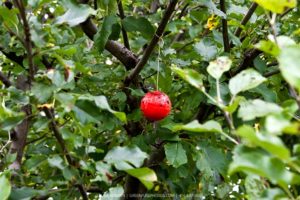 Organic Pest Management
Organic Pest Management
Organic farmers identify the conditions that allow weeds and pest to thrive and try to create more favourable conditions. The key to managing pests and weeds on organic farms is to reduce their impact by using different management practices.
Organic farming practices to reduce pests
Organic farmers first rely on prevention methods to manage pests and only use organic pesticides when preventative measures haven’t worked. Some organic practices include rotating crops, planting cover crops, intercropping, strategic planning and maintaining high levels of biodiversity. Many of these practices are also used by non-organic farmers.
Natural allies
Plants, insects and other organisms help organic farmers control pests. For example, a cover crop of ryegrass can smother weeds and tachinid flies can parasitize cabbageworms. Beneficial organisms are creatures that perform a beneficial role in pollinating plants or attaching insects. To recruit the support of beneficial organisms, farmers can provide suitable habitat by sowing plants preferred by beneficial organisms, welcoming wildflowers, or increasing biodiversity in general.
See Our PDF to Learn More: DownloadPrint
Journey 2050 Lesson: 2
This resource is a great addition to Lesson 2 – Plant Health
SnapAg:
What are GMOs and are they okay to eat? What does organic farming look like? How are animals like chickens or cattle raised?
snapAG is a series of resources that invite students to explore the hot topics affecting the agriculture industry today. Topics range from organics, biotechnology, GMOs, livestock, and more.
Explore what’s trending in agriculture in Canada by browsing the topics here.
Sources available at: https://aitc-canada.ca/en-ca/learn-about-agriculture
snapAg is brought to you by Agriculture in the Classroom Canada and partners.



